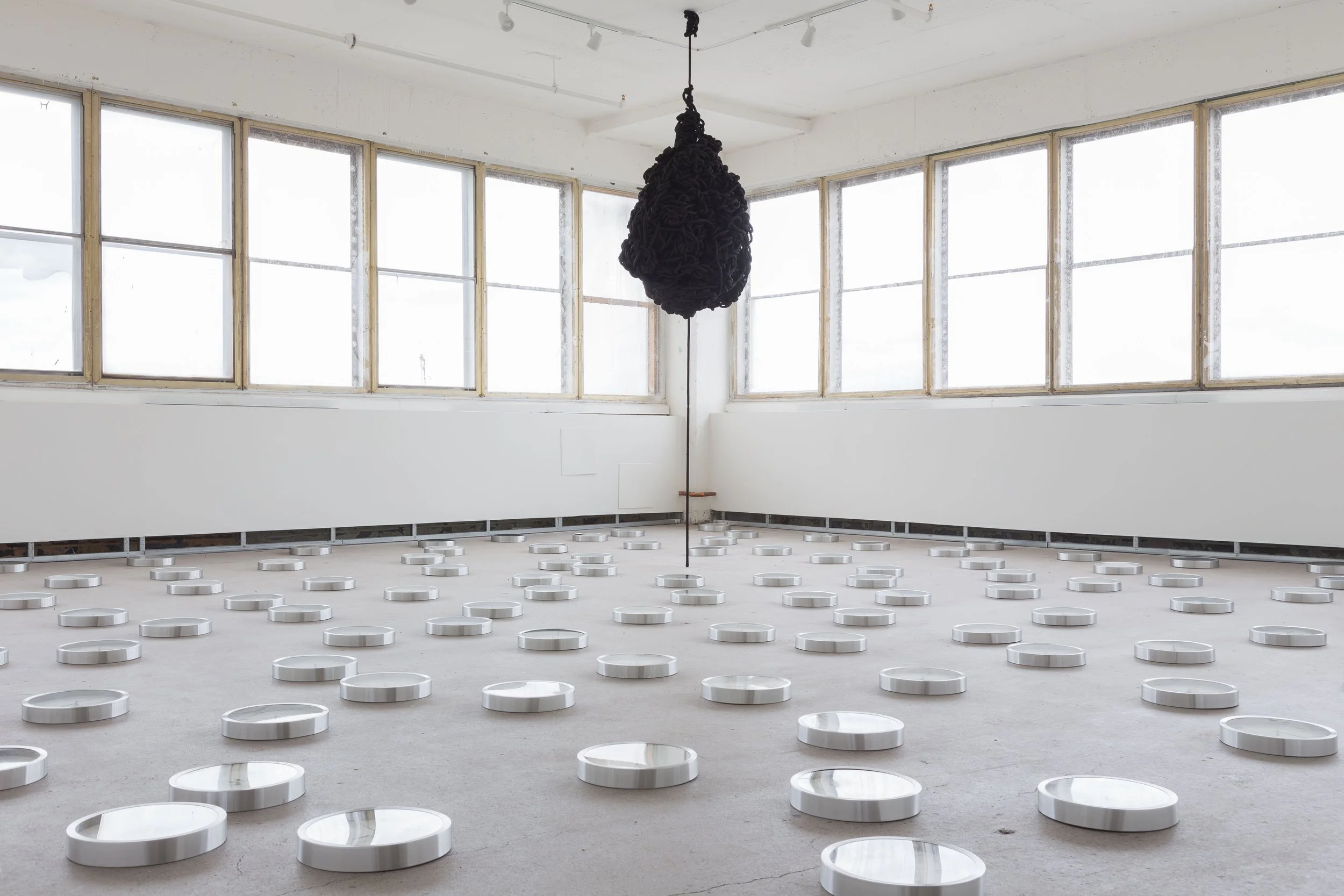Exhibition at 3333
2022-2023
Magali Reus, Hwael (Fully Automatic Time), 2017. Powder-coated aluminum and steel, fiberglass and polyester resin, pigments, cotton webbing with custom embroidery, engraved aluminum, laser-cut felt, nuts and bolts, Jesmonite, airbrushed aluminum. Courtesy of the artist. Photo: alignements.
This first exhibition at the 3333 Crémazie Est in Montreal is rooted in the strength, radicalness and artistic affinities that link major figures in contemporary art. This exhibition includes work by Eduardo Basualdo, Edward Burtynsky, Folkert de Jong, Adad Hannah, Sophie Jodoin, Marlon Kroll, Rafael Lozano- Hemmer, Magali Reus, Kelly Richardson, Marc Séguin, Bill Viola and Hajra Waheed. The thematics of temporality, memory and image construction in the respective practices of the selected artists becomes visible through this exhibition.
Dramatic and dreamlike, Eduardo Basualdo's Reflujo (2014) is composed of a hundred clocks densely disposed on the floor. All identical and mass-produced, these clocks fix time as their hands stop moving. They then symbolize the passage of time on which we have no hold. From the ceiling hangs an enormous knot made of black rope. The end of the rope hangs close to the floor. This piece, whose mass is held together by a thin rope, alludes to a fragile equilibrium that can easily be broken.
Until the age of 22, Hajra Waheed grew up on a worker base for the world's largest oil company, in Dhahran, Saudi Arabia. The series PETRO SUBURBS (2018) evokes her childhood marked by surveillance and isolation in this mock Californian neighborhood. Her collage work refers to the segregationist divisions of the territory operated under Jim Crow laws in the United States, then elsewhere when these ideals were exported. The different layers of images Waheed interweaves evoke how the present is built on a more or less distant past.
With Two Views, Adad Hannah designed two small crates, which unfolded reveal both the making of and the presentation of an image burned in his memory, but never photographed. The two crates each contain all the objects and equipment needed to set up the scene depicted on the screens. The videos were shot inside these crates, on which they are then displayed, the plasma screen replacing the photographic one. Adad Hannah has created an autonomous work that integrates both the work and the production of the work. Here, the artist questions the ways in which video and photography bring experience and fiction closer together.







